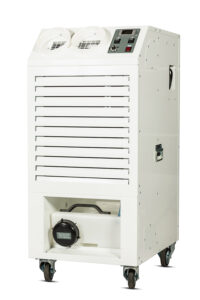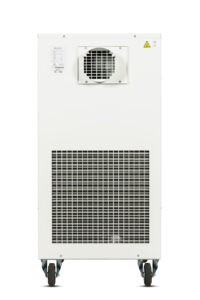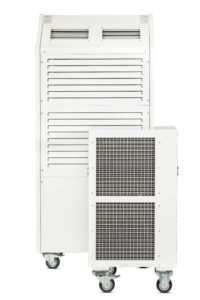Not having an air conditioning system inside your office or work space in this age is certainly not the norm. Many people even consider this gadget a luxury, especially when they see the prices of high-end models such as the inverter air conditioning units. However, one cannot deny the fact that these units are a necessity nowadays. Apart from maintaining the temperature inside the room at a comfortable level, these devices also act as a humidifier and also filter dust particles and bacteria.
How do Air Conditioning Units Work?
Although one can find air conditioners of different sizes and styles, all of them have one thing in common: to bring down the temperature inside the room in which it is installed to a comfortable level during the summer season. The air conditioning unit essentially has four parts: an expansion device, a condenser, a compressor, and an evaporator. The refrigerant sucks in hot and humid air from the room. It passes it over a condensing unit, following which the compressor pressurises the coolant, and converts it from a liquid to a gaseous state, chilling the cooling coils. Warm air sucked from within the room passes over the coils, being chilled in the process. This chilled air brings down the temperature inside the room. This cycle repeats continuously, providing you with cool air inside the room.
Indoor air conditioner
It is important to note that the windows model has all the parts inside a single unit, whereas the split model has all the parts except the blower outside the room. The split model consists of two modules: the blower and the condenser. The condenser is kept outside the house while the blower is mounted on a wall inside the room. The technician installing the split AC unit bores a hole in the wall, just behind the blower unit, and passes several pipes that provide power to the compressor as well as take out the hot air inside the room and supply chilled air to the blower, which then distributes it inside the room. While both these types of units are termed as a single room air conditioner, people often refer to the split system as an external air conditioner.
Differences between an indoor air conditioner and an industrial model
The industrial air conditioning unit works on the same basic principle as that of the residential unit, which is the circulation of the cooled refrigerant. However, the former units are much more complex as they need to handle different conditions with greater precision as well as control different zones within the facility. The biggest difference in industrial ACs is that they are modular. All of the components of such a unit are put together in single cabinets so that additional units can be added onto in order to provide more cooling power. The industrial unit can serve one or more thermal zones, and it’s major equipment is placed outside of the zone being served, in an appropriate central location, whether on top, inside, or next to to the building. These units have several thermostats, one for each zone. The user can adjust individual thermostats to change the temperature of the air inside the room in which it is located. The central AC units have different devices, such as:
- Humidifier
- Air supply and return fans
- Cooling coil
- Reheat coil
- Mixing box
- Preheat coil
- Filter
- Outdoor air
Is the air conditioning unit portable too?
Unlike central air conditioning, split, and window units; the portable air conditioning units, also known as mobile air conditioner or the portable air conditioner, are mobile and do not require permanent installation. Such units have castor wheels attached on their bottom for easy portability. They weigh less than other types of AC units and are typically 28″ to 34″ tall. You need to install such a unit to a window so that it can vent out humid and warm air from the room. Ensure that the unit you purchase comes with an easy-to-use window snap kit. The sound emitted by the mobile air conditioning unit is the same as that of a windows model.
The Water Cooled Air Conditioner.
The function of such air conditioners is to discard heat absorbed by the evaporator’s refrigerant. Such units employ water to chill the heated air refrigerant emanating via the compressor by propelling counter-flow water in it. Typically, the water is dispersed in the drain after usage. However, one can also reuse the water by recirculating it with the help of a cooling tower. The cooling tower uses natural draft or forced draft to reject the heat from the water.
With so many options, you might feel puzzled trying to figure out which is the best air conditioner for your needs. Your best option is to talk with knowledgeable and courteous air conditioning experts at Broughton EAP, who specialise in all types of air conditioning solutions.


